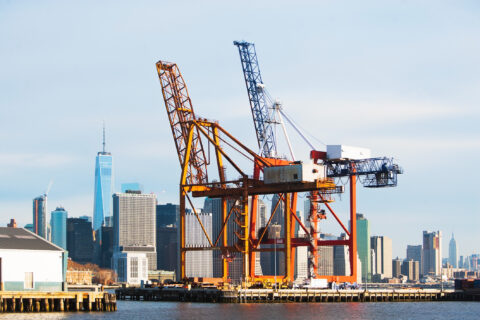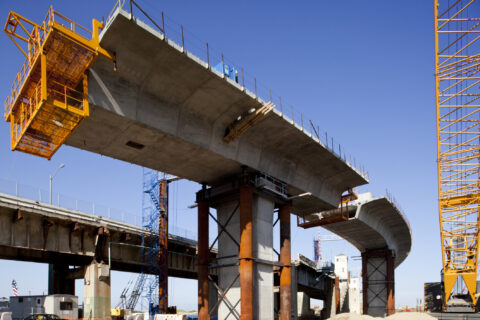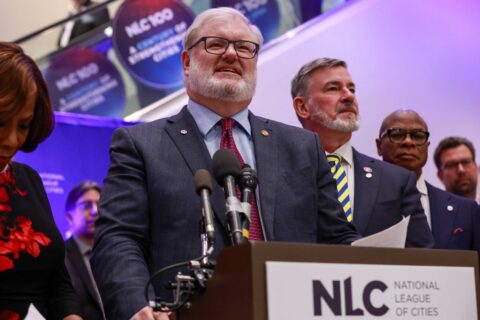Since 2016, NLC has found that declines in funding, increased mandates and misaligned priorities at the federal and state levels have placed responsibility on local governments to maintain roads, upgrade water and wastewater systems and accommodate growing transit ridership. More than five years later, municipal infrastructure conditions continue to suffer without additional federal and state fiscal support. While municipal funding streams continue to recover from the pandemic, America’s cities, towns and villages look forward to pairing federal and state funds with local dollars to improve infrastructure across the country. As local governments wait for federal and state Notice of Funding Opportunities (NOFOs) as part of the Bipartisan Infrastructure Law (BIL), they are already investing in local infrastructure projects now using their State and Local Fiscal Recovery Funds (SLFRF) dollars through the American Rescue Plan Act (ARPA).
Local leaders can learn how cities, towns and villages are investing in infrastructure through ARPA funds by using the ARPA Investment Tracker, a data collection effort between NLC, the National Association of Counties (NACo) and Brookings Metro, and the COVID-19 Local Action Tracker, an NLC data collection effort in partnership with Bloomberg Philanthropies. The Local Action Tracker provides qualitative data on cities, towns and villages of all sizes, including data on how the smallest ARPA recipients—non-entitlement units, or NEUs—are spending their funds. Data from the ARPA Investment Tracker found that America’s largest metropolitan cities are spending nearly 10 percent of their SLFRF allocations on infrastructure projects, which is the second-highest tracked spending category. Infrastructure projects receiving the most funding include public spaces (48.3%), sewer and water (25.6%), public transportation (8.9%), roadways and bridges (8.4%) and green infrastructure (6.5%) (Figure 1).
Here are some key ways metropolitan cities and NEUs are allocating their SLFRF dollars for infrastructure projects:
Public Space: Williamsburg, Virginia allocated $900,000 of the city’s ARPA funds to enhance a playground at Waller Mill Park. The park itself features space for outdoor recreation, including playfields, fishing, boating, pedal boating, canoeing, kayaking and picnic tables and shelters. The city is also allocating ARPA funds to invest $500,000 in sidewalks and $250,000 in bus stop shelters.
Sewer and Water: Lake Oswego, Oregon allocated $1.4 million in ARPA funds to improve street drainage on Lakeview Boulevard. The city allocated another $2 million to support power generation at the city’s water system. By funding the Lakeview project through SLFRF, the city will cushion its stormwater fund, which is the most under resourced city fund, according to city staff.
Public Transportation: Tulsa, Oklahoma allocated $20,500 of the city’s ARPA funds to the Tulsa Bike Share, to support purchase of bike racks, signs and bicycle equipment. The funds will also support staff and will be used to conduct neighborhood outreach to support the biking initiative.
Roadways and Bridges: Boston, Massachusetts allocated $2 million of the city’s APRA funds to implement neighborhood traffic calming street design to enforce safe driving behaviors. The funds will be used to update safety features, such as curb extensions, raised crosswalks and the application of speed humps to slow drivers down to 20 miles per hour in neighborhoods.
Green Infrastructure: To meet Madison, Wisconsin’s goals to increase energy efficiency, decrease environmental toxins and install more solar panels in neighborhood-owned affordable housing buildings, the city is dedicating $250,000 in ARPA funds to these projects. Through these funds, the residents of affordable rental housing will benefit from lower energy bills and better indoor air quality.
Broadband: Prinsburg, Minnesota and Kandiyohi County allocated ARPA funds to complete the next step in implementing a fiber-to-the home broadband project in partnership with Arvig, a network provider located in the state of Minnesota. The Kandiyohi County Board of Commissioners approved an allocation of $330,000 in ARPA funds and Arvig provided an additional $450,000 to meet the project’s needs, with the City of Prinsburg planning to allocate a portion of its ARPA funds as well, to meet the $1 million funding goal.
Moving Infrastructure Projects Forward
Neglected infrastructure and deferred maintenance are compound costs for local governments that can have dire consequences for residents. Unfortunately, they are also often unavoidable in times of fiscal uncertainty. Without ARPA and the subsequent Bipartisan Infrastructure Law, municipalities would have had little choice but to respond to COVID-19 related declines by further putting-off long-term infrastructure improvements in order to meet their emergency needs. Transit had to keep running, water needed to stay on and access to stable internet was more essential than ever, regardless of residents’ ability to pay. However, as a result of ARPA SLFRF grants, local leaders have a historic opportunity to grow their way to recovery, rather than cutting back. By prioritizing responsible infrastructure projects that can produce more equitable opportunities and outcomes for all residents, local leaders can begin enacting their communities’ visions for post-pandemic recovery.
Additional Resources for Cities Using ARPA Dollars for Infrastructure
- Local Fiscal Recovery Funds Playbook
- Infrastructure Opportunities for Small Communities
- ARPA Funds: Best Practices for Small Communities
- Get Ready to Apply for Road Safety Grants








